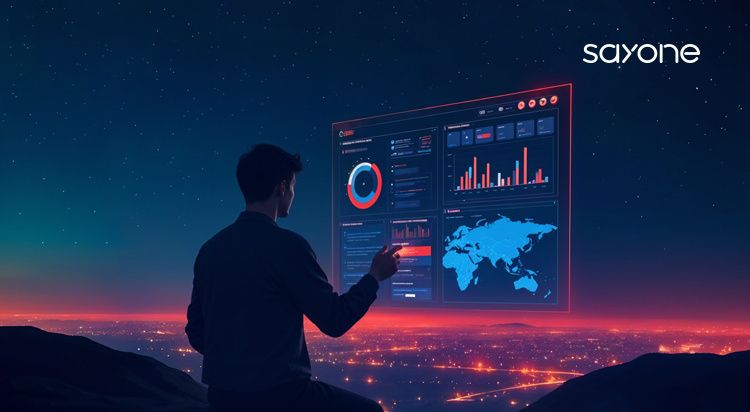
Subscribe to our Blog
We're committed to your privacy. SayOne uses the information you provide to us to contact you about our relevant content, products, and services. check out our privacy policy.

Renjith RajJune 25, 20258 min read

Generating table of contents...
When Real Garage Life first approached SayOne to build their e-commerce mobile application, they were grappling with a challenge that is all too familiar in the world of online retail - bridging the gap between digital product listings and the real-world needs of their customers.
Their core audience, garage enthusiasts and homeowners, were eager to upgrade their spaces with single post, 2-post and 4-post lifts, but a persistent pain point was undermining conversion uncertainty.
Reason for this?
Well, Customers found it difficult to visualize how these sizable pieces of equipment would actually fit into their unique garage layouts. Measurements and product images alone couldn’t answer questions like, “Will this lift fit next to my workbench?” or “How will it look in my actual space?” This uncertainty led to hesitation, abandoned carts, and lost sales.
Real Garage Life recognized that to overcome these bottlenecks, they needed to offer more than just specifications; they needed to provide a personalized, immersive experience that would empower users to make confident purchasing decisions.
That’s where the idea of an augmented reality (AR) tool took root. By allowing customers to virtually place lifts in their own garages using their smartphones or tablets, AR could eliminate guesswork and bring clarity to the buying process. The company turned to SayOne for our expertise in custom web and mobile application development, seeking a solution that would not only address building a new mobile application, but also set a new standard for user experience in their industry.
1. Handling Diverse Garage Layouts and Dimensions
Garages are rarely uniform - users have sloped floors, low ceilings, cluttered corners, or irregular wall angles. Creating an AR visualization for these products that could adapt to these unpredictable environments was a major hurdle. The system needed to recognize and interpret vastly different spatial configurations accurately, ensuring virtual lifts didn’t clip through walls or float mid-air, regardless of the garage’s physical quirks.
2. Ensuring Accurate AR Placement and Scaling
The tool’s credibility hinged on millimeter-perfect scaling. Even minor discrepancies in how lifts were rendered could mislead users, leading to costly post-purchase surprises.
Achieving this level of precision was complicated by the limitations of mobile device sensors, which struggle with depth perception and environmental tracking, especially in dimly lit or textureless spaces.
While AR thrives on mobile devices, many users initially explored Real Garage Life’s website via desktop. Delivering a consistent experience across platforms was problematic - desktop users couldn’t leverage AR’s core functionality, creating a disjointed journey. Balancing feature parity without compromising the immersive mobile experience added complexity to the design process.
AR tools demand seamless integration between frontend visualization and backend services. However, developers often face disjointed systems - authentication handled separately from 3D model storage, user data siloed from AR session logs. This fragmentation creates inefficiencies, slows feature development, and complicates debugging. For Real Garage Life, unifying these elements was critical to delivering a frictionless user journey.
AR visualization relies on dynamic data: user preferences, garage dimensions, and product specs must sync instantly across devices. Traditional databases struggle with latency, leading to laggy experiences where virtual lifts "jump" or resize mid-session. Ensuring real-time accuracy while managing high concurrent user loads adds backend complexity.
Customers often start exploring products on desktop but switch to mobile for AR. Without unified session tracking, users lose progress, forcing them to re-enter measurements or preferences. This disjointed flow erodes trust and increases abandonment rates.
AR apps collect sensitive spatial data (e.g., garage layouts), raising GDPR and CCPA compliance risks. Developers must balance rich personalization with strict data anonymization, all while maintaining app performance - a challenge exacerbated by varying regional laws.
Marketing campaigns or seasonal demand can suddenly surge user traffic. AR’s resource-heavy nature - processing live camera feeds and 3D rendering - strains servers, risking crashes during peak periods. Scaling infrastructure reactively often leads to downtime or degraded visual fidelity.
From data fragmentation to real-time synchronization, our team knew that a conventional, pieced-together infrastructure wouldn't suffice. We needed a unified, powerful, and developer-friendly platform that could serve as the central nervous system for the entire Real Garage Life Ecommerce and AR experience.
This is where Appwrite emerged as the clear winner. As an open-source backend-as-a-service (BaaS) platform, it provided a comprehensive suite of tools authentication, databases, storage, and serverless functions all under one roof.

This cohesive ecosystem was the antidote to the fragmentation we sought to avoid. Instead of stitching together disparate services for user management, data storage, and security, we could use Appwrite’s integrated environment to build a secure and scalable foundation. Its built-in customization options allowed us to tailor its features, creating a user dashboard and backend logic that fit the unique demands of an immersive AR module.
Appwrite wasn't just a backend; it was the strategic choice that enabled us to bring a complex vision into a practical reality for Real Garage Life’s customers.
"For an AR solution to succeed, the backend must be invisible, instant, and secure. We chose Appwrite because it delivered this trifecta out of the box. The true value of our solution came from the Appwrite dashboard, which we customized to serve as the main control center for the Real Garage Life application. This centralized interface gave our team and the client complete control and visibility over every part of the user journey. - Lead Developer, SayOne
Instead of juggling multiple logins and dashboards for authentication, databases, and analytics, we had a single source. This made our development process more straightforward, reduced debugging time, and allowed us to monitor application health in real-time. For the user, this meant a faster, more stable, and more secure experience from sign-up to AR visualization.
We designed the mobile application with an attractive, accessible interface. Users can browse various lifts, filter them by preferences, and immediately see how each lift would appear in their garage.
The app allows users to adjust positions, rotate views, and determine fit all without lifting a wrench making garage layout planning clear and practical.
Recognizing that many users begin their journey on desktop, we included a quick QR scan feature.
Desktop users can generate a QR code, scan it with their mobile device, and immediately continue the AR experience in their actual garage space bridging the gap between platforms and maintaining a consistent user journey.
Appwrite Storage served as a safe and reliable repository for all high-quality 3D models and user-generated content. Granular access controls and strong encryption ensured both asset protection and user data privacy, meeting the highest standards for security and compliance.
By using Appwrite’s comprehensive toolset, we did more than just build a backend; we created a connected system that addressed every challenge we faced. This approach allowed us to focus on what truly matters: delivering a clear, reliable, and confidence-inspiring experience for Real Garage Life customers.
Augmented reality has become a powerful differentiator for eCommerce, especially for retailers selling complex or large products like automotive lifts. Real Garage Life, as an eCommerce platform specializing in lifts, faced the classic online sales challenge: customers struggled to picture how a lift would actually fit and look in their personal garage space.
Traditional product images and descriptions simply couldn’t bridge this gap, often leading to hesitation, abandoned carts, or costly returns.
By implementing AR-powered product visualization, Real Garage Life now allows shoppers to view true-to-scale 3D models of lifts directly in their own garages using a mobile device. This interactive approach gives customers the ability to rotate, move, and inspect lifts from every angle, instantly answering questions about fit and appearance without guesswork.
As industry research shows, AR in product visualization significantly improves customer engagement, increases time spent on site, and drives higher conversion rates. It also reduces return rates by ensuring buyers have a realistic understanding of the product before purchase. For Real Garage Life, this means fewer mismatched expectations and a smoother path from consideration to confident checkout.
The success of this project demonstrates how advanced visualization tools can reshape the online buying journey. Suppose your business is ready to solve unique eCommerce challenges or deliver standout digital experiences. In that case, our team has the expertise to design and develop custom software and mobile solutions tailored to your needs. Reach out to us to discover how we can help you create engaging, future-ready applications that drive results.

We're committed to your privacy. SayOne uses the information you provide to us to contact you about our relevant content, products, and services. check out our privacy policy.

About Author
Chief Technology Officer @ SayOne Technologies | Conversational AI, LLM

We collaborate with visionary leaders on projects that focus on quality